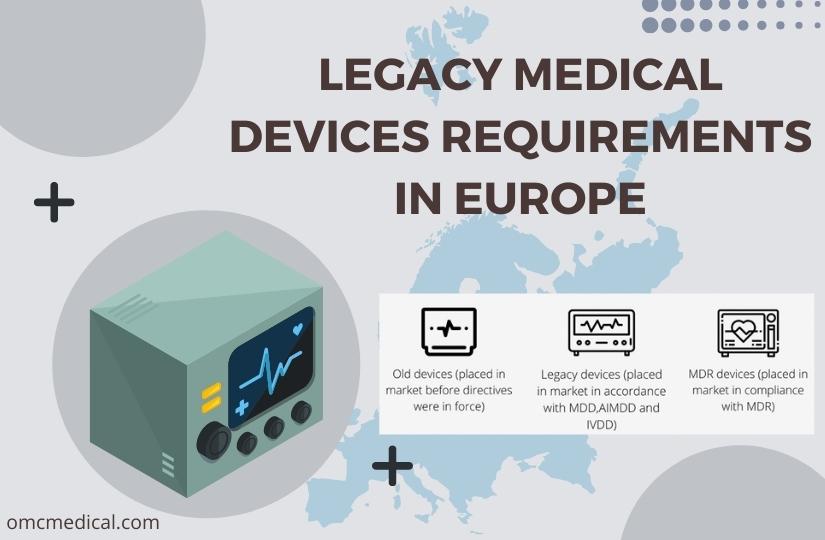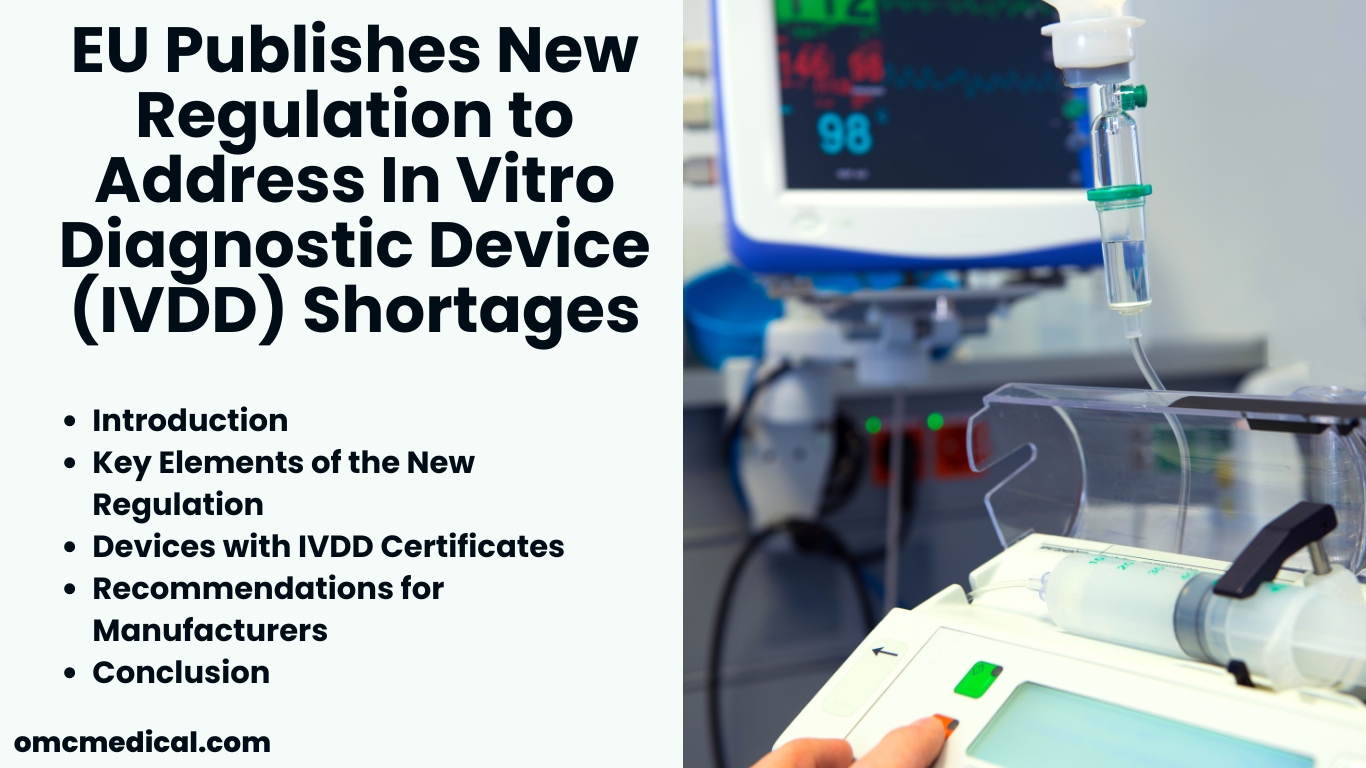Legacy medical devices include all previously regulated devices under the Medical Devices Directives (MDD 93/42/EEC 90/385/EEC) and In-vitro Diagnostic Devices Directive (IVDD 98/79/EC).
Medical Device Coordination Group (MDCG) published the guidance documents on the Application of EU MDR to legacy devices and Legacy device management for Legacy devices.
There are three terminologies to guide the manufacturers – old devices, legacy devices and MDR devices.
‘Old devices’ were placed on the market before 26 May 2021, holding valid Medical Device Directive Certificates or the AIMDD certificates.
‘Legacy Devices’ are those devices that have a valid CE certificate under the directives MDD and IVDD that were placed after 26 May 2021 or those that require a conformity assessment to be carried out.
A Class III device, for example, can be considered a legacy device because of the conformity tests done and valid CE certificates. Class Is / Im devices with self-declared certificates do not fall under this category.
Legacy devices must be MDR compliant under the prescribed transitional timelines set by the MDR (2017/745). The transitional provisions and timelines can be found in Article 120 of the EU MDR.
‘MDR devices’ are placed on the market as conforming to the MDR other than ‘legacy devices’.

This topic focuses on the Legacy Devices requirements per MDR 2017/745.
EU MDR aims to implement the following aspects of medical devices:
- Identification- This is achieved by Unique Device Identifiers (UDI).
- Transparency- The Database available in EUDAMED (European Databank on Medical Devices.) ensures that the device description and details of different economic operators are open and easily accessible for users.
- Surveillance-Post-Market Surveillance, vigilance reporting and Periodic Safety Update Reports (PSUR) are prime importance under MDR.
Identification of Legacy Medical Devices
To ensure proper identification of medical devices, UDI is implemented under MDR. Read more about UDI in our article on UDI (Unique Device Identification) system. For legacy devices, the identification is made possible with the help of EUDAMED-DI.
Some manufacturers may have implemented UDI to their medical devices. In such cases, the device identifier is obtained from the UDI-DI. Devices that do not have UDI should have a EUDAMED-DI designated by the manufacturer.
The European Commission document on the Management of legacy devices can be used to understand the different device identifiers.
Application of Post Market Requirements to Legacy Devices
All relevant requirements mentioned in MDR apply to legacy devices as well. This includes post-market surveillance, market surveillance and vigilance.
Manufacturers need to keep in mind the information required under Article 83 and Chapter VII of EU MDR while implementing a post-market surveillance system.
The Notified bodies must consider the new requirements applicable to manufacturers resulting from the transitional provisions as part of the surveillance framework.
Application of other MDR requirements to legacy devices
Application of all other requirements should be implemented to contribute to post-market surveillance, market surveillance, vigilance, and registration of economic operators and devices. This ensures an all-rounded and well-functioning surveillance system.
The other MDR requirements applicable to legacy devices are as follows.
- Article 10(12-15)
Obligations of manufacturers for market surveillance, field safety notices and vigilance.
- Article 11 (3) (c-g) and 11 (7)
Obligations of Authorised representatives.
- Article 13 (2,4,5,6,10)
Importer obligations for IFU, labelling, and register of complaints.
- Article 14 (2,4,6)
Distributor obligations.
- Article 22
Article on system and procedure packs.
- Article 29
Article of registration of medical devices and UDI.
- Article 31
Article of registration of manufacturers, authorized representatives, and importers.
- Article 83-100
Articles 83-88 on PMS, PSUR, vigilance, serious incident reporting, field safety corrections, and trend reporting.
Articles 89-99 on analysis of data, implementing acts, market surveillance activities, electronic system on market surveillance and others.
Articles 98-100 on Preventive health protection measures, Good administrative practice, and electronic system for market surveillance.
FAQs
Should the change of device classification be considered during this transition period for a legacy device manufacturer?
No, a possible change in the risk classification should not be considered during the transition period. Devices subjected to AIMDD should be regarded as Class III devices to apply the relevant MDR requirements during the transition period.
I am a Legacy device manufacturer complying with MDD, and I do not hold a Periodic Safety Update Report (PSUR) since it was not a part of MDD. Does MDR require a PSUR for my legacy device?
Yes, manufacturers of legacy devices are subjected to preparing their PSURs as per Article 86 of MDR. They will need to make PSURs available on request by the competent authorities. In addition to this, the manufacturers shall also make the PSURs available to the Notified Bodies (NBs) included in their surveillance audit framework. The NBs can verify the approved quality system and that the design remains compliant with the certificate issued under the MDD or AIMDD.
Apart from a manufacturer, which other legacy device economic operators get impacted?
The primary role of Importers gets deeper when MDR is in effect. Importers were assumed to be associated only with product handling and taking part in the logistics chain. In MDR, Article 13 details a lot more responsibilities to the Importers where they are obliged to ensure compliance to a certain level. Few duties overlap with the other economic operators’ roles, such as the authorised representative and the distributors.
Does it require changes to the manufacturer’s QMS when transitioning from MDD to MDR for legacy devices?
The fact that QMS is a process approach where the manufacturer may contain numerous products under the existing QMS certification umbrella, and not all of those require transitioning to MDR. The current QMS process may be adequate for some of the devices holding valid MDD CE certification and may not comply with those listed in the MDR Annex IX Chapter I. Hence, the manufacturer needs to upgrade their QMS to meet parallel for the category of devices.
What triggers a re-certification for my legacy device?
This is an essential factor to consider while making updates to the existing MDD certified legacy device design.
- Any significant change to the device or change in the device’s intended purpose will trigger a re-certification process (MDR Article 120(3)). The MDCG guidelines here clarify what changes are considered significant change(s) in the device.
- Few unexhaustive lists of significant changes include:
- Design or performance specification
- Software change
- Substance changes in material
- Sterilisation method
- The manufacturer can also approach the Notified Body to determine whether the change(s) made to the design/device constitutes significant in case of doubt.











